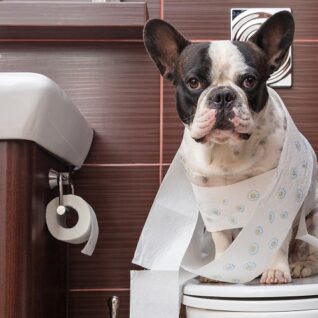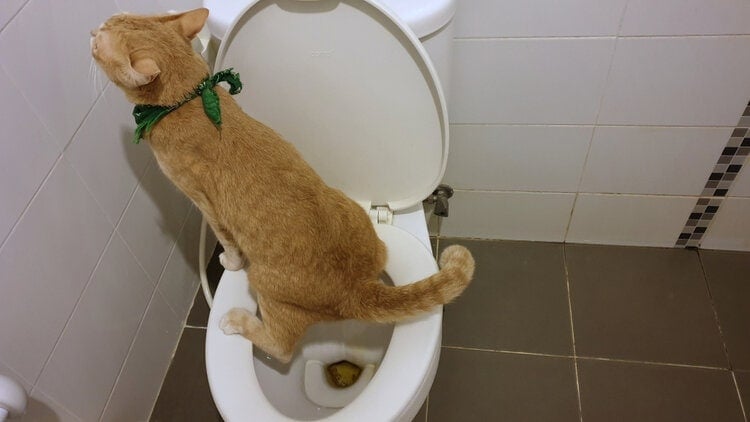My Implications of Flushing Animal Waste Down the Toilet
My Implications of Flushing Animal Waste Down the Toilet
Blog Article
What're your ideas concerning Can You Flush Dog and Cat Poo Down the Toilet??

When it comes to taking care of waste, specifically animal waste, many individuals commonly turn to the convenient choice of flushing it down the toilet. However, this relatively easy service can have serious effects for the setting and public health. In this article, we'll explore why flushing animal waste down the commode is a negative idea and give alternative approaches for appropriate disposal.
Introduction
Proper garbage disposal is important for keeping environmental sustainability and public health. While it may appear safe to flush animal waste down the bathroom, it can bring about various concerns, both for the setting and human health.
Dangers of flushing animal waste
Environmental influence
Flushing animal waste introduces damaging germs and virus right into rivers, which can negatively affect marine ecosystems. These virus can pollute water sources and damage marine life, disrupting fragile ecological communities.
Public health problems
Pet waste contains harmful germs such as E. coli and Salmonella, which can posture serious wellness dangers to human beings. Purging pet waste down the bathroom can infect water products, bring about the spread of conditions and infections.
Alternatives to flushing
As opposed to flushing pet waste down the commode, there are several different disposal methods that are extra environmentally friendly and sanitary.
Composting
Composting animal waste is an environmentally friendly way to take care of it. By composting, raw material is broken down into nutrient-rich soil, which can be made use of to feed gardens and plants.
Landfill disposal
Getting rid of pet waste in a land fill is one more alternative. While not as eco-friendly as composting, it is a more secure choice to flushing, as it stops the contamination of water resources.
Pet dog garbage disposal systems
There are customized family pet waste disposal systems available that securely and hygienically dispose of pet waste. These systems frequently utilize enzymes to break down waste and get rid of odors.
Steps to proper animal garbage disposal
To guarantee correct disposal of animal waste, comply with these steps:
Scooping and nabbing waste
Consistently scoop and bag animal waste using eco-friendly bags. This prevents waste from polluting the setting.
Using assigned waste bins
Dispose of bagged pet waste in marked waste bins, such as garden compost bins or landfill bins. Prevent flushing it down the toilet whatsoever expenses.
Cleaning up can and pet areas consistently
Consistently clean can and pet dog locations to prevent the build-up of waste and germs. Usage pet-safe cleansing products to keep health.
Benefits of correct disposal approaches
Embracing appropriate disposal techniques for animal waste supplies a number of advantages:
Lowered environmental pollution
Appropriate disposal methods reduce the risk of environmental pollution, shielding rivers and communities from contamination
Decreased threat of water contamination.
By staying clear of flushing pet waste down the toilet, the risk of water contamination is significantly lowered, safeguarding public health.
Enhanced hygiene and health
Appropriate disposal methods promote far better sanitation and health, creating a safer atmosphere for both human beings and animals.
Conclusion
To conclude, flushing pet waste down the toilet is dangerous to the setting and public health. By taking on alternative disposal methods and adhering to proper waste monitoring methods, we can lessen the adverse influence of animal waste and add to a cleaner, much healthier world.
What To Do With Dog Poo – The Do's And Don'ts Of Disposing Of Faeces
Dog poo bins
Some councils provide dedicated dog waste bins in popular dog-walking areas that can take dog poo that has been bagged but you can legally dispose of dog waste in any public litter bin, as long as it is securely bagged. This also applies to your wheelie bin at home.
Do not flush
Water companies do not recommend flushing dog faeces down the toilet because certain parasites can survive the water processing treatment and are potentially harmful to humans. You should also never consider flushing dog poo that has been bagged down the toilet as the bags will not break down and instead create severe blockages in the sewage system.
In the woods
The Forestry Commission promotes a ‘stick and flick’ method for dealing with waste in the woods. This means finding a stick and using it to flick any poo from off the path so that it is out of the way of other walkers. You could also bury it as long as it is not in an area where there might be livestock.
Livestock
Parasites found in dog poo can be transmitted to livestock if they inadvertently eat infected faeces that has been left on grazing land. This could result in the death of sheep or abortion in cattle so you should always make sure you pick up your dog’s waste in fields where livestock could be present.

Consistently clean can and pet dog locations to prevent the build-up of waste and germs. Usage pet-safe cleansing products to keep health.
Benefits of correct disposal approaches
Embracing appropriate disposal techniques for animal waste supplies a number of advantages:
Lowered environmental pollution
Appropriate disposal methods reduce the risk of environmental pollution, shielding rivers and communities from contamination
Decreased threat of water contamination.
By staying clear of flushing pet waste down the toilet, the risk of water contamination is significantly lowered, safeguarding public health.
Enhanced hygiene and health
Appropriate disposal methods promote far better sanitation and health, creating a safer atmosphere for both human beings and animals.
Conclusion
To conclude, flushing pet waste down the toilet is dangerous to the setting and public health. By taking on alternative disposal methods and adhering to proper waste monitoring methods, we can lessen the adverse influence of animal waste and add to a cleaner, much healthier world.
What To Do With Dog Poo – The Do's And Don'ts Of Disposing Of Faeces
Dog poo bins
Some councils provide dedicated dog waste bins in popular dog-walking areas that can take dog poo that has been bagged but you can legally dispose of dog waste in any public litter bin, as long as it is securely bagged. This also applies to your wheelie bin at home.
Do not flush
Water companies do not recommend flushing dog faeces down the toilet because certain parasites can survive the water processing treatment and are potentially harmful to humans. You should also never consider flushing dog poo that has been bagged down the toilet as the bags will not break down and instead create severe blockages in the sewage system.
In the woods
The Forestry Commission promotes a ‘stick and flick’ method for dealing with waste in the woods. This means finding a stick and using it to flick any poo from off the path so that it is out of the way of other walkers. You could also bury it as long as it is not in an area where there might be livestock.
Livestock
Parasites found in dog poo can be transmitted to livestock if they inadvertently eat infected faeces that has been left on grazing land. This could result in the death of sheep or abortion in cattle so you should always make sure you pick up your dog’s waste in fields where livestock could be present.

Do you really like more info about Can You Flush Dog and Cat Poo Down the Toilet?? Post feedback down the page. We would be glad to hear your ideas about this write-up. We hope that you visit us again soon. Feel free to pause to share this page if you enjoyed reading it. Thanks for being here. Don't hesitate to stop by our blog back soon.
Call Today Report this page